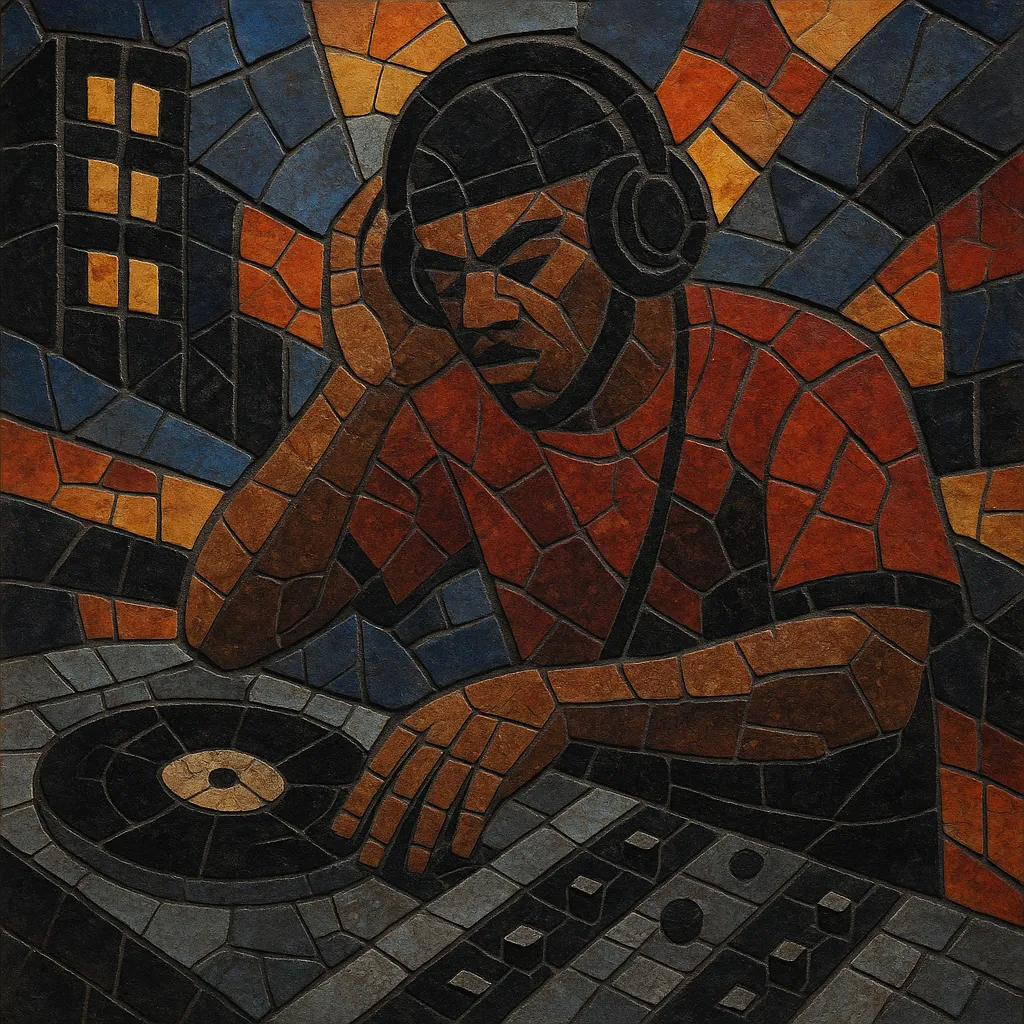Ghetto house (often called "booty house") is a raw, stripped‑down strain of Chicago house that foregrounds pounding 4/4 drums, simple basslines, and repetitive, chant‑like vocals. Tracks are purposely minimal, loop‑driven DJ tools designed for peak‑energy dancefloors.
The style is known for its fast tempos, explicit party lyrics, and relentless percussion, typically built from classic drum machines. Its economy of elements and focus on groove make it both hypnotic and intensely physical, laying the groundwork for later Chicago styles like juke and footwork.
Ghetto house arose on Chicago’s South and West Sides in the early 1990s as DJs sought harder, more direct dance‑floor tools than the soulful house of the late 1980s. With the city’s underground parties as its proving ground, producers drew on the drum programming of Chicago house and acid house, the vocal attitude of hip hop, and the bass pressure of Miami bass. The result was a minimal, high‑impact form aimed squarely at dancers and DJs.
Dance Mania Records became the style’s definitive home, releasing a torrent of 12-inches from artists like DJ Deeon, DJ Funk, DJ Milton, DJ Slugo, Jammin Gerald, Parris Mitchell, and Paul Johnson. These records typically featured sparse arrangements, hard‑hitting kicks and claps, and short, raunchy vocal hooks looped for maximum kinetic effect. Between roughly 1994 and 1998, the label’s catalog codified the genre’s sound and spread it globally through crates and mixtapes.
By the late 1990s, the genre’s speed and drum science seeded new directions. In Detroit, its aesthetic cross‑pollinated with electro, helping catalyze ghettotech. In Chicago, producers accelerated and further fragmented the beats, giving rise to juke and, soon after, footwork. Renewed interest in the 2010s—through reissues, documentaries, and DJ advocacy—repositioned ghetto house as a crucial link between classic house and contemporary high‑tempo club mutations.


